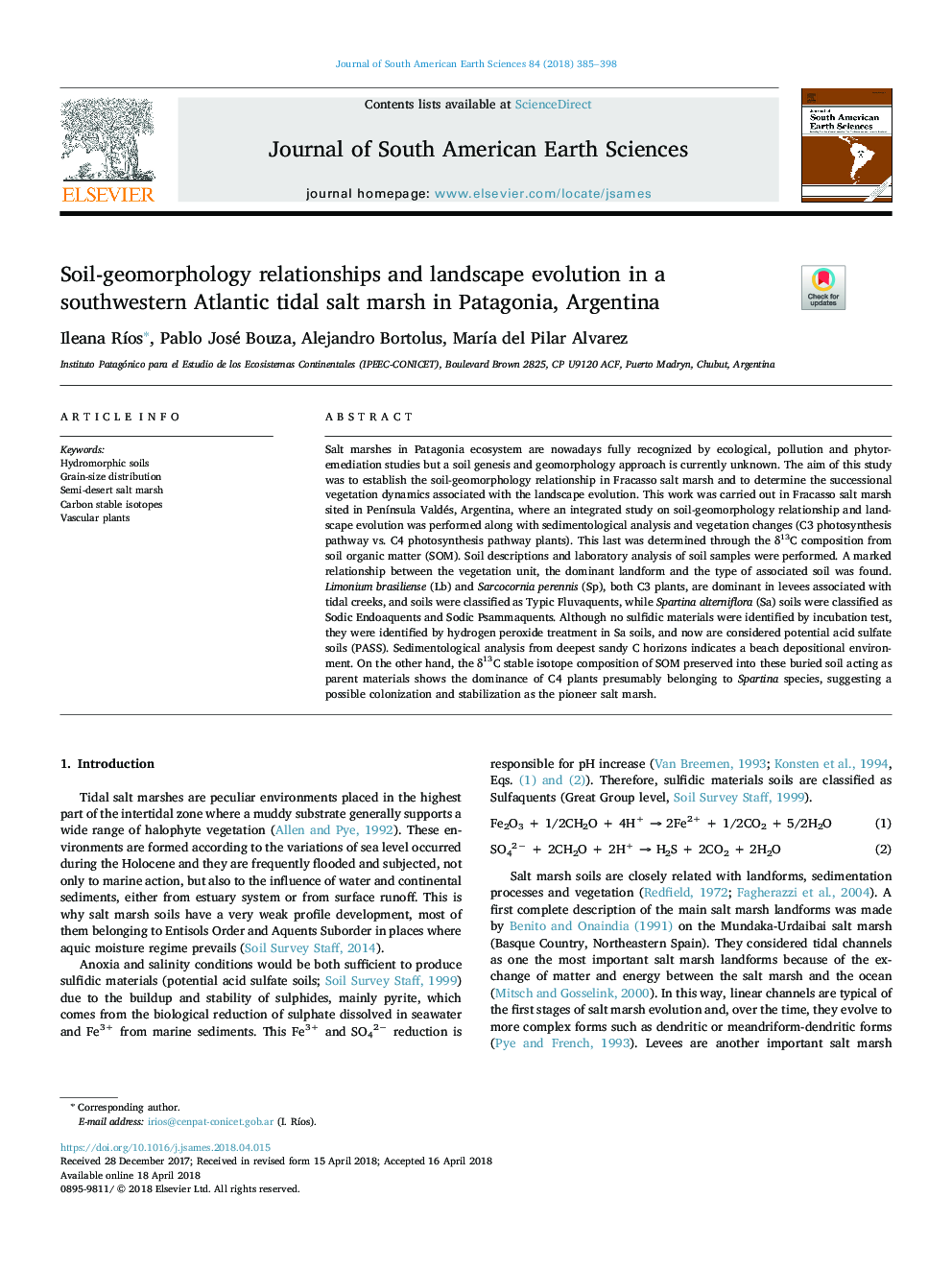| کد مقاله | کد نشریه | سال انتشار | مقاله انگلیسی | نسخه تمام متن |
|---|---|---|---|---|
| 8907685 | 1635126 | 2018 | 14 صفحه PDF | دانلود رایگان |
عنوان انگلیسی مقاله ISI
Soil-geomorphology relationships and landscape evolution in a southwestern Atlantic tidal salt marsh in Patagonia, Argentina
ترجمه فارسی عنوان
ارتباطات ژئومورفولوژی خاک و تکامل چشم انداز در جزیره دریای مدیترانه جنوب غربی اقیانوس آرام در پاتاگونیا، آرژانتین
دانلود مقاله + سفارش ترجمه
دانلود مقاله ISI انگلیسی
رایگان برای ایرانیان
کلمات کلیدی
خاک های هیدرومورفیک، توزیع اندازه دانه نمک نیمه خشک ملاس، ایزوتوپ پایدار کربن، گیاهان عروقی،
موضوعات مرتبط
مهندسی و علوم پایه
علوم زمین و سیارات
علوم زمین و سیاره ای (عمومی)
چکیده انگلیسی
Salt marshes in Patagonia ecosystem are nowadays fully recognized by ecological, pollution and phytoremediation studies but a soil genesis and geomorphology approach is currently unknown. The aim of this study was to establish the soil-geomorphology relationship in Fracasso salt marsh and to determine the successional vegetation dynamics associated with the landscape evolution. This work was carried out in Fracasso salt marsh sited in PenÃnsula Valdés, Argentina, where an integrated study on soil-geomorphology relationship and landscape evolution was performed along with sedimentological analysis and vegetation changes (C3 photosynthesis pathway vs. C4 photosynthesis pathway plants). This last was determined through the δ13C composition from soil organic matter (SOM). Soil descriptions and laboratory analysis of soil samples were performed. A marked relationship between the vegetation unit, the dominant landform and the type of associated soil was found. Limonium brasiliense (Lb) and Sarcocornia perennis (Sp), both C3 plants, are dominant in levees associated with tidal creeks, and soils were classified as Typic Fluvaquents, while Spartina alterniflora (Sa) soils were classified as Sodic Endoaquents and Sodic Psammaquents. Although no sulfidic materials were identified by incubation test, they were identified by hydrogen peroxide treatment in Sa soils, and now are considered potential acid sulfate soils (PASS). Sedimentological analysis from deepest sandy C horizons indicates a beach depositional environment. On the other hand, the δ13C stable isotope composition of SOM preserved into these buried soil acting as parent materials shows the dominance of C4 plants presumably belonging to Spartina species, suggesting a possible colonization and stabilization as the pioneer salt marsh.
ناشر
Database: Elsevier - ScienceDirect (ساینس دایرکت)
Journal: Journal of South American Earth Sciences - Volume 84, July 2018, Pages 385-398
Journal: Journal of South American Earth Sciences - Volume 84, July 2018, Pages 385-398
نویسندگان
Ileana RÃos, Pablo José Bouza, Alejandro Bortolus, MarÃa del Pilar Alvarez,
